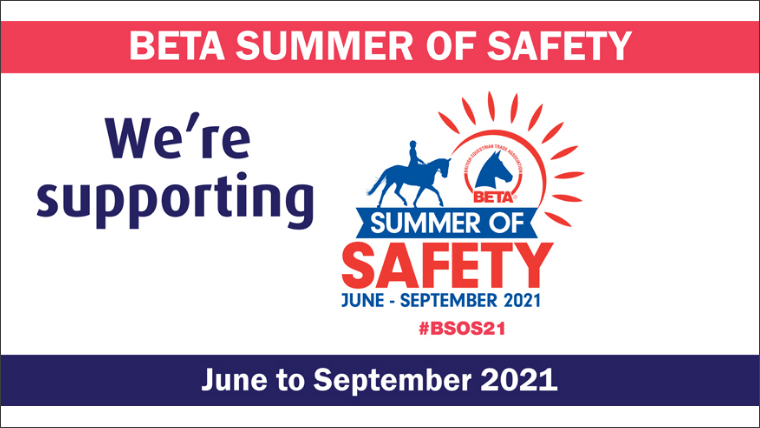June to September 2021
Back with a twist on previous years and covering a huge range of topics, the focus of the campaign this year is on how products work to improve safety, their care, maintenance and their specific safety features.
In a six part series, this week will focus on hats, body protectors and safety footwear.
Riding Hats
What parts of your head does your riding hat protect?
- The Scalp – the outer layer of your head, including skin, muscles and galea (dense fibrous tissue).
- Skull bone – your brain’s own protection zone.
- Dura – the Dura Mater is a thick membrane that surrounds the brain and the top of your spinal cord.
- Arachnoid – the arachnoid mater lies under the dura mater and your arteries and veins run on the top of it.
- Brain – which is divided into three main parts – cerebrum, cerebellum and brainstem. The cerebrum is the largest and splits into the right and left hemispheres, which contain the four lobes: frontal, parietal, temporal and occipital.
- Face – including some protection to your eyes and ears.
Ever wondered what the small loop on your chin strap is?
Retention harnesses feature this loop to help prevent the hat’s strap from working loose. It should be pushed up against the base of the fastening clip to ensure the strap remains in place and a perfect fit for the rider.
Unfortunately, some riders mistakenly think the loop is there to stop excess strap material from flapping around. Without the loop in the correct place, the strap will loosen with wear. Some riding hat manufacturers have got round this dilemma by providing two loops – one to prevent slippage and one to hold a longer strap.
Body Protectors
Do you know what a body protector is made from?
- Fabric covering
- Inner material – usually two or more layers of heat-sensitive PVC Nitrile foam, which softens with body heat when worn. Some foam is perforated to make it more flexible, lighter and to improve air flow. Lighter foam is usually harder when not in use, while heavier foam is softer. Modern foams mould to the body, so this difference in weight is barely noticeable when the body protector is worn.
- Fastenings – include zips, sliding buckles, clips or Velcro strips and will depend on whether the body protector is a tabard or front-opening garment.
- Lining – usually a breathable mesh.
Footwear
Have you ever turned your horse out while wearing flip-flops at the yard?
You could end up with some really really nasty injuries to your toes and feet. When handling horses always wear sturdy footwear to keep those tootsies covered and protected.
Boots with a steel toe cap are a great idea to help prevent injuries. Those with added toe caps should bear the CE mark and have been tested to European standards EN ISO 20346 or EN ISO 20345. A reinforced toe undergoes tests to show that it can bear weights of up to 1,000 kg while the sole itself should function on both hard and soft surfaces. Beware of shoes/boots that claim the toecap meets a standard as it is the entire footwear that must be tested.

